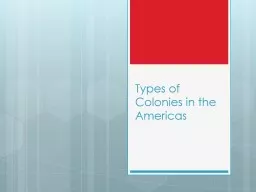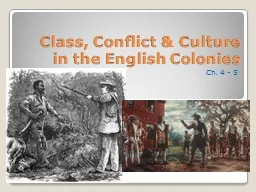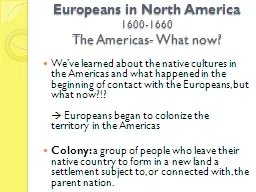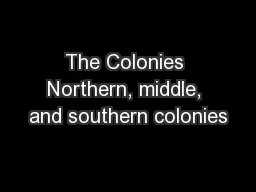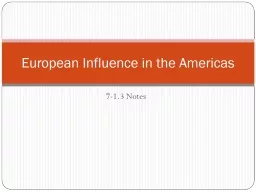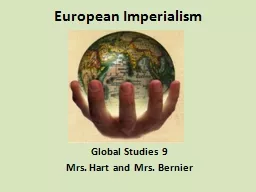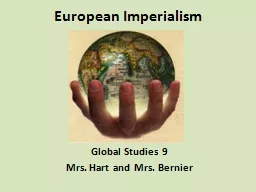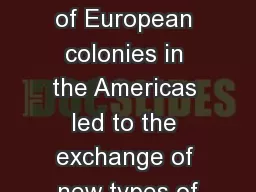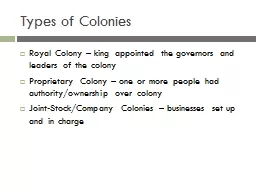PPT-Types of Colonies in the Americas
Author : olivia-moreira | Published Date : 2019-02-19
Vocabulary Word Definition Encomienda Spanish economic system where settlers were given land and they were in control of that land and the people on it Plantation
Presentation Embed Code
Download Presentation
Download Presentation The PPT/PDF document "Types of Colonies in the Americas" is the property of its rightful owner. Permission is granted to download and print the materials on this website for personal, non-commercial use only, and to display it on your personal computer provided you do not modify the materials and that you retain all copyright notices contained in the materials. By downloading content from our website, you accept the terms of this agreement.
Types of Colonies in the Americas: Transcript
Download Rules Of Document
"Types of Colonies in the Americas"The content belongs to its owner. You may download and print it for personal use, without modification, and keep all copyright notices. By downloading, you agree to these terms.
Related Documents

